Departure
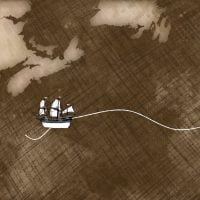
The Pilgrims leave England for the last time
The Mayflower set sail from Plymouth on the 16th September 1620 – or the 6th September according to Bradford’s diary (to explain, and just to make things a bit more complicated, in 1752, the Old Style Julian calendar was changed to the New Style Gregorian calendar we know today – 11 days were dropped from September and before that the year ended on 24th March).
Many of the Separatist families from Leiden who had been on the leaky Speedwell were now on the Mayflower with other families, all setting off as colonists for a New World – new of course to them, but not to the indigenous people who had lived there for thousands of years.
Ships
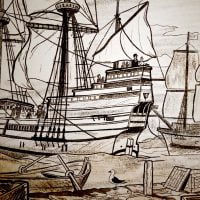
A tale of two ships: the Speedwell and the Mayflower
In the summer of 1620, the Separatists in Holland had decided which of them would sail first to America. They boarded the ship they had bought, the Speedwell, ready to join another ship hired in England, the Mayflower.
Bradford, their chronicler and later colony Governor, picks up the story as they depart from Holland:
“Thus hoisting sail, with a prosperous wind they came in short time to Southampton, where they found the bigger ship come from London, lying ready, with all the rest of their company. After a joyful welcome, and mutual congratulations, with other friendly entertainments, they fell to parley about their business…” Continue reading “Ships”
Pilgrims
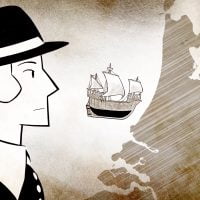
For “they knew they were pilgrims”: preparing for a voyage
Once the Separatists in Holland started to conclude they wanted to move on again from the homes they had established in Leiden, there was much work to be done.
They had lengthy discussions about where they should go. Some suggested Guiana while others preferred Virginia, where the earlier Jamestown colony had been established. They decided Virginia would be better, as Bradford recounts:
“Such hot countries [like Guiana have] grievous diseases, and many noisome impediments, which other more temperate places are freer from, and would not … agree with our English bodies … if they should there live, & do well, the jealous Spaniard would never suffer them long, but would displant or overthrow them, as he did the French in Florida … they should have none to protect them, & their own strength would be too small to resist so potent an enemy, & so near a neighbour.”
Debates
Sedition
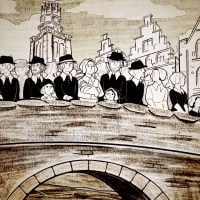
To play the King: the Pilgrims continue to provoke James I
Even though the Pilgrims were now living in Holland, they were still at odds with the English authorities and the King, James I.
Leading Pilgrim and Elder William Brewster had set up a printing press with the financial support of another of their group, Thomas Brewer, in their new home city of Leiden. Brewster printed writings which helped spread the word about the Pilgrims’ religious beliefs. They wanted to bring about change, and believed that books were a good way to reach more people.
Immigrants
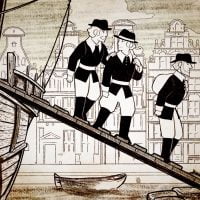
Life in Leiden
Many of the Separatists from the Gainsborough area and other places in England had escaped to Holland in 1608, and after a year in Amsterdam, they moved – under the leadership of Rev John Robinson – to the neighbouring city of Leiden.
Bradford, Separatist Pilgrim and later diarist of their lives and times, described their new home as, “a fair & beautiful city, and of a sweet situation, but made more famous by the university [there], in which of late had been so many learned men.” The University was definitely an attraction for some of their group, particularly Robinson.
Virtual Reality Allows Audiences to experience the story of the Mayflower Voyage and its contemporary parallels
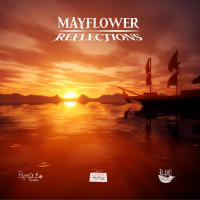
This year marks the 400 year anniversary since the Mayflower Voyage saw 102 passengers take the perilous journey from Plymouth to the America in search of a better life. To mark the occasion, Leicester-based arts organisation MBD has created a virtual reality experience that immerses audiences in the story of the momentous journey and explores the contemporary parallels with the early voyagers.
Due to be released this Summer, Mayflower Reflections, allows audiences to put on a Virtual Reality Headset from the comfort of their own home and find themselves transported back to the 1600s. As they hear of the story of these early settlers, viewers learn of how much has changed since the voyagers first settled on the land, and the similarities between their journey and the journey of millions of asylum seekers today.
Reunited

Arriving in Amsterdam
Eventually, the Pilgrims all made their way to Holland after managing to escape from England in the summer of 1608. Their journeys so far had, according to their chronicler William Bradford, captured the popular imagination:
“For by these so public troubles, in so many eminent places, their cause became famous.”





